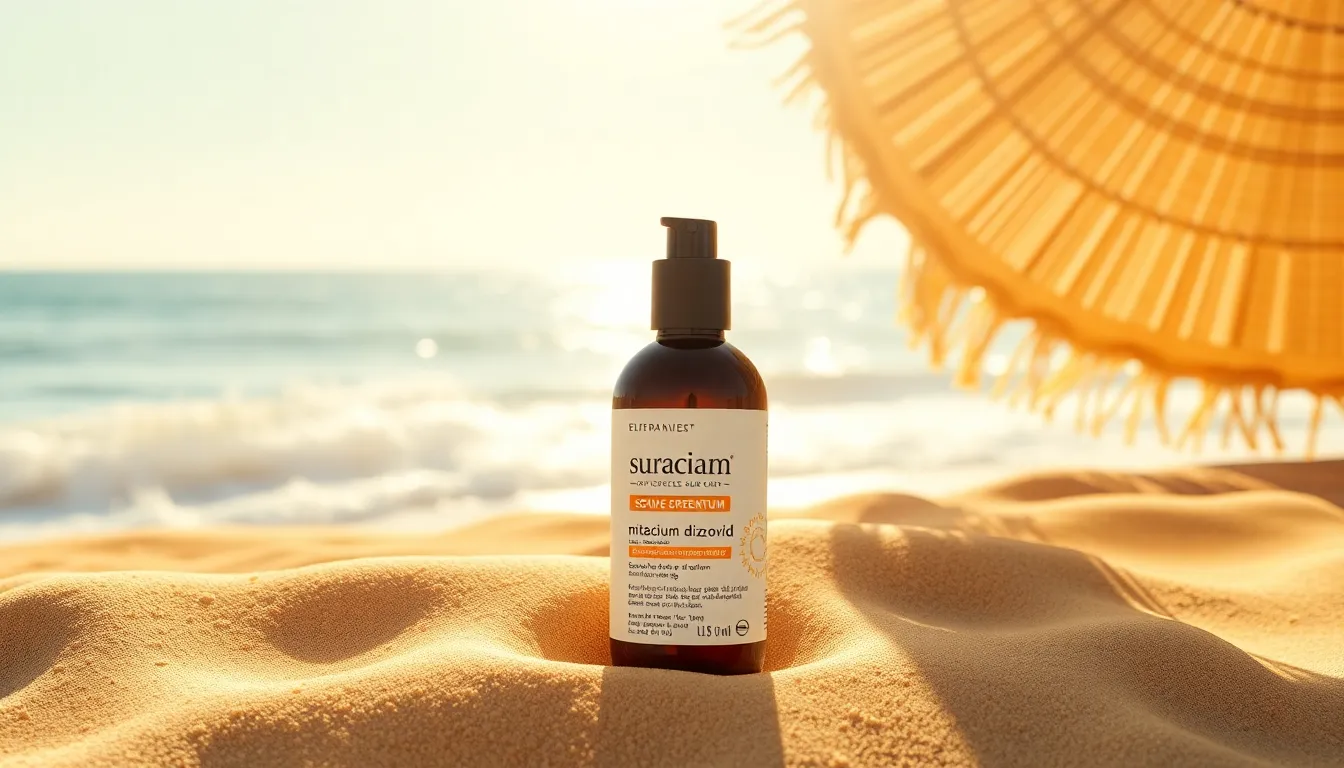When it comes to sunscreen, the quest for the perfect protection often feels like a game of hide and seek. Enter mitacium dizovid, the unsung hero in the battle against harmful UV rays. But how much of this magical ingredient do you really need? Spoiler alert: slathering on a gallon won’t turn you into a sunblock superhero.
Understanding the right amount of mitacium dizovid not only keeps skin safe but also keeps your wallet intact. After all, nobody wants to look like a greasy lobster or break the bank on skincare. Let’s dive into the nitty-gritty of sunscreen formulation and discover the sweet spot for mitacium dizovid that’ll have you basking in the sun without a care in the world.
Understanding Mitacium Dizovid
Mitacium dizovid is a crucial component in sunscreens known for its protective properties against UV rays. Finding the right amount in formulations enhances skin safety during sun exposure.
What Is Mitacium Dizovid?
Mitacium dizovid functions as a sunscreen agent, shielding the skin from ultraviolet light. Its formulation promotes absorption of UV rays, effectively minimizing sun damage. This ingredient has gained recognition due to its stability when exposed to sunlight. Many manufacturers incorporate it into their products to improve efficacy. Clinically, mitacium dizovid has shown potential benefits in preventing premature aging caused by UV exposure.
How Much Mitacium Dizovid Needed in Sunscreen
Mitacium dizovid provides multiple advantages for skin protection. It offers broad-spectrum defense, acting against both UVA and UVB rays. Users experience reduced risk of sunburn, leading to healthier skin. Its formulation often results in a lightweight texture, avoiding a greasy feel. Additionally, this compound can enhance the overall aesthetic of sunscreens, making them more appealing to consumers. Many dermatologists recommend products containing mitacium dizovid for its effectiveness and reliability.
Recommended Dosage of Mitacium Dizovid

Finding the right dosage of mitacium dizovid ensures optimal sunscreen protection. Experts agree that appropriate amounts balance efficacy and skin comfort.
Factors Influencing Dosage
Dosage decisions depend on several factors. Skin type plays a significant role; oily skin may require different formulations than dry skin. Additionally, sun exposure duration affects the amount needed. Higher sunlight intensity often necessitates increased mitacium dizovid levels. The product formulation also impacts dosage; creams or lotions may require different quantities than sprays. Lastly, water resistance claims determine how much of the ingredient remains effective during wet activities.
General Guidelines for Usage
General recommendations exist for mitacium dizovid use. Products should contain between 2% and 10% of the ingredient for effective UV protection. Applying one ounce, roughly a shot glass full, uniformly covers the body. Reapplication every two hours, especially after swimming or sweating, is essential. Many dermatologists advise choosing broad-spectrum sunscreens, ensuring they protect against both UVA and UVB rays. Checking product labels ensures compliance with these guidelines for maximum sun safety.
Application Tips
Proper application of sunscreen with mitacium dizovid ensures optimal protection against UV rays. Following specific guidelines helps achieve the best results.
How to Apply Sunscreen with Mitacium Dizovid
Applying sunscreen correctly maximizes its effectiveness. First, shake the bottle well to blend the ingredients. Next, dispense about one ounce, which covers the full body adequately. Spread the sunscreen evenly across all exposed skin, focusing on areas often missed, like the ears, back of the neck, and tops of the feet. Allow the sunscreen to absorb for at least 15 minutes before sun exposure, ensuring proper protection. Remember to check for a broad-spectrum label to guarantee defense against both UVA and UVB rays.
Frequency of Application
Reapplying sunscreen regularly is crucial for maintaining protection. Every two hours, a fresh application ensures continued defense against UV damage. Swimming or sweating necessitates more frequent reapplications, preferably immediately afterward. Consider using water-resistant formulations if engaging in water activities, as they provide extended protection. Failure to reapply increases the risk of sunburn, minimizing the benefits of mitacium dizovid. Always inspect product labels for specific recommendations regarding reapplication frequency to ensure comprehensive sun safety.
Potential Side Effects
Mitacium dizovid, while effective, can lead to some side effects. Users must stay informed about these potential reactions.
Common Side Effects
Common side effects of mitacium dizovid may include skin irritation, redness, or allergic reactions. Individuals might experience rashes or itching after applying sunscreen containing this ingredient. Some users notice that greasy or oily skin becomes more pronounced, particularly with higher concentrations. In certain cases, breakouts can occur, especially in those with acne-prone skin. Products that contain too much mitacium dizovid can contribute to clogged pores. Always monitor for any signs of discomfort after application.
When to Consult a Dermatologist
Consulting a dermatologist becomes essential when experiencing persistent irritation or allergic reactions. If reactions do not subside after discontinuing use, seeking professional advice is crucial. Dermatologists can assess skin sensitivities and recommend alternatives that provide effective sun protection without adverse effects. Individuals with a history of skin issues or sensitivities should discuss sunscreen choices with their healthcare provider beforehand. Regular skin evaluations can help detect any changes related to sun exposure and product use.
Conclusion
Finding the right amount of mitacium dizovid in sunscreen is essential for effective sun protection. Users should aim for formulations containing between 2% and 10% of this ingredient to balance efficacy and comfort. Proper application and reapplication are crucial to maintain optimal protection against harmful UV rays.
Awareness of potential side effects is also important. Individuals should monitor their skin’s response and consult a dermatologist if any irritation occurs. By choosing the right sunscreen and following application guidelines, everyone can enjoy the sun safely while minimizing the risk of sun damage.
